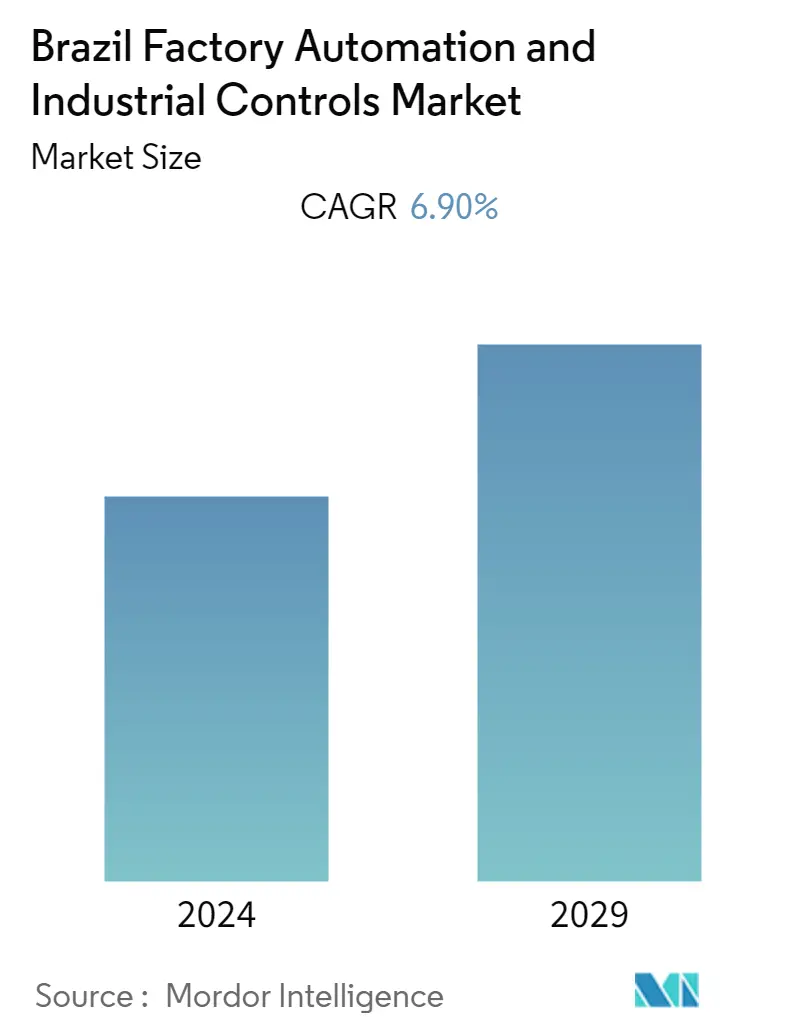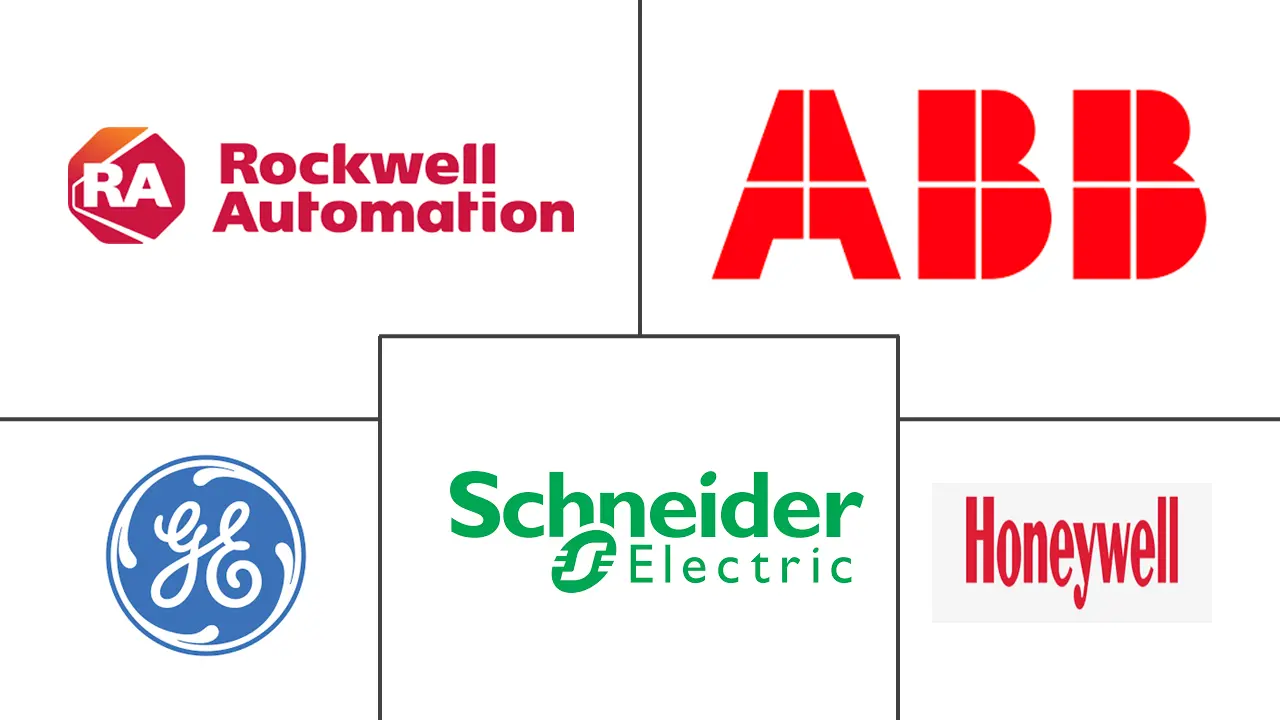Market Size of Brazil Factory Automation and Industrial Controls Industry

| Study Period | 2019 - 2029 |
| Base Year For Estimation | 2023 |
| Forecast Data Period | 2024 - 2029 |
| Historical Data Period | 2019 - 2022 |
| CAGR | 6.90 % |
| Market Concentration | Medium |
Major Players
*Disclaimer: Major Players sorted in no particular order |
Need a report that reflects how COVID-19 has impacted this market and its growth?
Brazil Factory Automation and Industrial Control Market Analysis
Brazil Factory Automation and Industrial Controls Market are anticipated to grow at a CAGR of 6.9% during the forecast period. Brazil is one of Latin America's most developed manufacturing nations and the second-largest exporter of appliances and electrical goods after Mexico. This fuels the nation's need for factory automation. Additionally, given that the manufacturing sector for aerospace and metallurgy is still underdeveloped in comparison to developed nations, AI-driven simulation is anticipated to increase its efficiency.
- According to the Brazilian Institute of Geography and Statistics, in the third quarter of 2021, Brazil's GDP from manufacturing reached BRL 31,514.53 million, up from 29,778.25 BRL million in the second quarter. The Southern and Southeastern parts of the country are home to the majority of the main manufacturing companies. In order to complete sales, automation firms in the nation usually work through a local distributor, agent, or integrator.
- In order to support the subsequent phase of economic growth, Brazil is demonstrating an ambitious investment in next-generation industrial technology. For instance, Recently, Nokia partnered with SENAI-SP, Brazil's National Service for Industrial Training, to execute its portfolio of connectivity solutions and technology at SENAI-SP's lab in So Caetano do Sul, a public facility for mechatronics training that includes an Industry 4.0 factory, further accelerating the market growth.
- Industry leaders in Brazil are swiftly implementing Industry 4.0 technology for businesses of all sizes and industries. Companies in Brazil are aware of the potential presented by digitization, which has prompted the development of new business models, income streams, and operational processes. For instance, in March 2021, Accenture agreed to buy Pollux, a Brazilian business that specializes in industrial robots and automation systems, as part of its aim to improve its digital manufacturing, operations, and supply chain capabilities. More than 1,000 companies in the manufacturing industry use the company's services. Pollux's clientele is mostly Brazilian, while pharma companies and car manufacturers use its technologies in their Brazilian operations.
- The COVID-19 outbreak has been causing significant disruption to the global economy and drastically changed how many industries operate daily. As shelter-in-place orders spread and work-from-home policies were implemented, related market participants reevaluated and revised their preparedness and response plans for cyber-incidents. This is especially clear for players who have put industrial control systems (ICS) (DCS, SCADA, or PLS) in place to monitor and manage crucial machinery and procedures.
- Automation and ICS have historically been rigid when considering implementation issues; consequently, the macro and microeconomic effects are obvious in factory-level economics. Numerous studies have demonstrated that the shift in manufacturing production from labor-intensive to capital-intensive is a major factor contributing to the slowdown in Total Factory Productivity (TFP).
